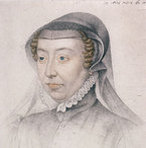|
Yesterday, the 16 Realms of the Commonwealth unanimously agreed to scrap the existing male Primogeniture law for the monarchy. Simply put, this means that, if the oldest child of Prince William and the Duchess of Cornwall is a girl, she will be first in line to succeed them, irrespective of any male siblings she may have. The Current Queen, HRH Queen Elizabeth II, took the title as her father, HRH King George VI, had no male heirs. This new law will bring the UK into line with other European Monarchies, who have also abandoned the "male-preference" Primogeniture laws, such as Sweden, Norway, Denmark, Belgium, Luxembourg and the Netherlands. In order for this to be passed into British Law, several pieces of legislation have to be changed including the Act of Settlement, the Bill of Rights, the Royal Marriages Act and Princess Sophia’s Precedence Act. To ensure the legislation is acceptable to all 16 Realms in the Commonwealth, a "Realms Working Group" will be set up, under the leadership of New Zealand. This new Law also changes the role of women with respect to the titles of "Heir Apparent" and "Prince of Wales". Under the previous, "male-preference" Primogeniture laws, there was only one situation where a female could become Heir Apparent, and only one special case, legislated for by Parliament, when it actually happened. To be designated as Heir Apparent, there must be no possibility of displacing the candidate under the current rules of succession. So, HRH Prince Charles is Heir Apparent because he is the eldest surviving son of the Sovereign. Under the "male-preference" Primogeniture laws, no further children of the Queen could displace Charles as Heir Apparent. For his mother, the story is very different. While Elizabeth was the oldest surviving child of the sovereign, with no male siblings, there was always the possibility that her father may have produced a male child, thus displacing her in the line of succession. Elizabeth was thus Heiress Presumptive, as she could have been displaced at any time by the birth of a male child to her father. The only way within the previous law that a female could become Heiress Apparent, is in the following specific case. If the Heir Apparent of the reigning monarch were to have a daughter, and then to die, with no further issue (having waited 9 months after his death to see if his wife had been carrying his child), then, as the sole representative of the dead Heir Apparent, his daughter would become Heiress Apparent to her grandparent, the reigning monarch. The reason for this is as follows. As the eldest surviving son of the Sovereign, the Heir Apparent cannot be displaced in the line of succession by any further children. His children are thus designated as his own successors, and cannot be displaced by any further children of the Sovereign. If the Heir Apparent then fathers a daughter and subsequently dies, that daughter takes the position of her father, the Heir Apparent, and cannot be displaced as her dead father is rather unlikely to have any more children. Thus, she will be Heiress Apparent, and not Heiress Presumptive. The only case of an official Heiress Apparent in the British Monarchy was Queen Anne. When her father, James II (VII of Scotland) was overthrown, his issue by second wife Mary of Modena was disbarred from inheriting the crown (James the Old Pretender). Thus, the only immediate family of James II in line to the throne were his daughters by his first wife, Anne Hyde, and his nephew, William of Orange. As a result of the Glorious Revolution of 1688, James' eldest daughter Mary, and his Nephew, William of Orange (who were by that time husband and wife) were invited to jointly take the throne as William III and Mary II. The settlement stated the following with regards to the succession: 1. William III and Mary II were to reign until death, and neither would lose the rank of sovereign if the other were to die. (Thus William would not be displaced by his children or by Anne, his sister in law). 2. If both sovereigns were to die, then the succession would fall on the children of William and Mary. 3. If William were to die childless, then the succession would fall on the issue of Mary with a second husband. 4. If Mary were to die childless, but William survived her then he would be succeeded by his sister-in-law Anne, and her issue. 5. If Anne were to die childless, or her line were to become extinct, then she would be succeeded by the issue of William with a second wife. The important point here is point 4. This states that, in the case of Mary II dying without issue, Anne would be the undisputed Heir, and no children of William with another wife could displace her. Thus, for the period where William III reigned after Mary II's death (1694 - 1702), Anne was his Heiress Apparent, not his Heiress Presumptive. The change in the law will have another interesting effect: we may get our first de facto Princess of Wales. The title of Prince of Wales is given to the Heir Apparent, and as the only female Heir Apparent (Queen Anne) was not given the title, there has never been a female incumbent. With the new laws in place, we may just find that the (hypothetical) eldest daughter of the Duchess of Cambridge may become our first Princess of Wales. © James Edward Hughes 2011
2 Comments
|
Categories
All
Archives |
MOST VIEWED POSTS
© James Edward Hughes 2013
 RSS Feed
RSS Feed





